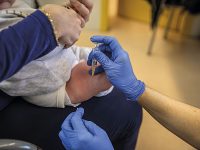A science fiction implant
Organ transplants in literature
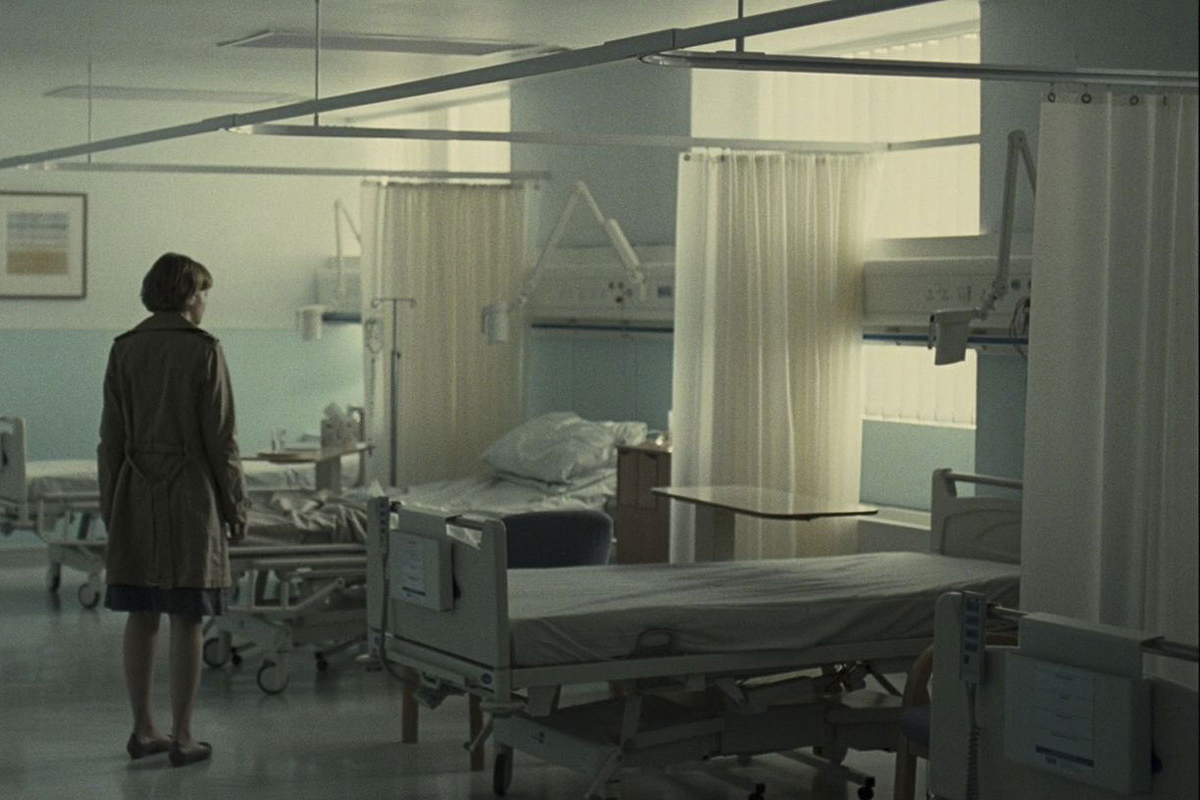
Long before the first successful transplants were performed on humans, some writers had already written about them in fiction. In this article, we explore some examples and explain how even seemingly crazy ideas were inspired by true experiments. Starting from the 1970s, when transplants had already become normalised in society, some narratives started to analyse real problems – such as the lack of donors. The work mentioned here shows the importance of literature and its contributions to the ethical and social debate surrounding transplants, ensuring the spread of these ideas to many other sectors.
Keywords: transplants, literature, bioethics, Russian science fiction, organ donation.
On 17 June 1950, Richard Lawler (1896–1982), a surgeon at the Mary Hospital in Chicago, performed the first successful transplant of an organ – a kidney – from a dead donor. The patient was 49 years old, the same age as the donor, and survived around five years after the operation. At this point, half a century of animal and human testing was already behind us. In 1906 and 1910, for instance, kidney transplants had been performed using pig, goat, and monkey organs, although none of the recipients survived more than a few days (Barker & Markmann, 2013).
«While transplantation science advanced, fiction literature included some references to the practice»
The oldest reference to the topic might be that found in the work of the Dominican friar and archbishop of Genoa, Jacopo da Varazze or da Varagine (ca. 1230–1298), who around 1260 published a compilation of the lives of saints known as Legenda Sanctorum or “Golden legend” (Voragine, 2016). One of the legends describes the miracle by Saints Cosmas and Damian, two physician brothers who were martyred and decapitated during the reign of Emperor Diocletian, in the third century AD. According to legend, in one of the churches devoted to them, there was a deacon with a gangrenous leg. He pleaded to the saints, who came at night, amputated his leg and, using ointment, attached the leg of a moor (or an Ethiopian – depending on the version) who had died that same day. There are different versions of this story, and it has been depicted in several paintings. Thus, the bothers are considered the patron saints of surgeons and transplants. As the neurobiologist at the University of Salamanca, José Ramón Alonso, puts it, this is what we would know today as composite tissue transplantation (Alonso, 2013).
But leaving religious legends aside, while transplantation science advanced, fiction literature included some references to the practice. Here we will present a few from modern novels. Although Mary Shelley’s Frankenstein is often referenced when dealing with this topic, the protagonist scientist in the story builds a human being using parts from different corpses. Therefore, those were technically not transplants.
Clarín and rooster crests
We found one of the first references in La Regenta, published by Leopoldo Alas, a.k.a. Clarín (1852–1901), in two volumes from 1884 and 1885. One of the characters is Frígilis, the nickname given to Tomás Crespo, an amateur scientist and convinced Darwinist who clashes with the conservative sectors of the population. In chapter X, the main character, Ana Ozores, remembers Frígilis as follows:
[…] un hombre que había llegado en su orgía de disparates a injertar gallos ingleses en gallos españoles: ¡lo había visto ella! Unos pobrecitos animales con la cresta despedazada, y encima, sujeto con trapos un muñón de carne cruda, sanguinolenta ¡qué asco!1 (Alas, 1989, vol. I, p. 459)
The practice is mentioned by other characters and is, of course, quite negatively judged. But where had Clarín found this apparent nonsense? Was it simply a product of the author’s imagination?

Some years earlier, the Scottish surgeon John Hunter (1728–1793) had transplanted a human tooth onto a rooster’s crest (Hunter, 1835). According to the surgeon, the experiment succeeded only once, after many attempts. He had also carried out other tests, such as taking a bird’s spur and connecting it to the crest. He also transplanted the testicles of a rooster into a hen’s belly. Likewise, Charles-Édouard Brown-Séquard (1817–1894), a colleague of Claude Bernard (1813–1878), implanted rat and cat tails onto rooster crests.
Therefore, medical literature already presented real-life examples that could have inspired Clarín. In addition, Charles Darwin (1809–1882) had commented on the role of crests in The descent of man (1871). In chapter xiii, he discussed the evolutionary importance in the selection of Spanish cockerel and tragopan pheasant crests. Unlike other naturalists, who considered them a disadvantage because they could provoke competitors, he thought they were involved in sexual attraction (Darwin, 1984).
This might have been one of Frígilis’s motivations (Pratt, 2001). Clarín’s character had already performed tests on plants: he had created a monochromatic theory and had looked for a way to adapt eucalyptus to the environmental conditions of the city of Vetusta, with a purely ornamental objective. The same could be assumed of his attempt to obtain a Spanish rooster with a colourful English crest. He did not attempt sexual interbreeding because the resulting hybrid might have worse characteristics. Rather, he believed that he would get a better aesthetic result with the graft, one that would harmonise the features of both varieties.
Head transplants in Russian literature
Already in the twentieth century, we can find what seems to be the fruit of a powerful and adventurous imagination. In 1925, the Russian author Alexander R. Belyaev (1884–1942) published Professor Dowell’s Head (Belyaev, 2013). It was published between 16 June and 6 July in the Moscow newspaper Rabochaya Gazeta. The author had been a lawyer and was an amateur musician and actor, but this was his literary debut and the story was an immediate success. It was also published in another magazine, and as a revised and longer book the following year. Ten years later the author expanded it, and the new version became one of the most famous Russian science fiction stories to ever be published (Krementsov, 2009).
«From the mid-1960s, with the advance in techniques and the first methods to avoid tissue rejection, organ transplantation was consolidated»
The story takes place in Paris, although some sources place it in the United States. It starts with the hiring of a girl with experience in medicine to be the assistant of a physician and researcher, with the condition that she remained silent regarding what she saw. The girl, Marie Laurane, soon discovers what his experiments are about: in the laboratory there is a severed head, placed on a sort of platform with tubes that apparently kept it alive. When the girl moves, the head follows her with his eyes. She soon realises that it belongs – or belonged – to the famous professor Dowell, a surgeon that was famous for his experiments trying to keep organs from recent corpses alive.
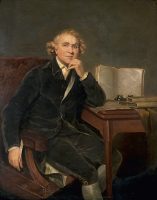
Disobeying professor Kern’s orders, Marie opens a valve that allows the head to speak, and they establish a trusting relationship. Dowell explains that Kern forces Dowell to revise his work on how to keep heads alive. Other heads appear in the novel, and the characters discuss an experiment to re-attach heads to bodies, even if they belong to different people.
This story is also based on reality. On 18 September 1925, Sergei Brukhonenko (1890–1960), a young physician, was showing a device he called an «autojector» at the second Congress of Russian Pathologists in Moscow. It was used to keep the severed heads of laboratory animals alive. Two electric pumps moved the blood through rubber tubes. The blood was oxygenated in a special container and heated to between 37 and 40ºC. The researcher explained that the head of a dog lived for an hour and forty minutes and had reflexes.
The general press did not pay any attention to it, but in May 1926, at the second Congress of Soviet Physiologists in Leningrad, Brukhonenko presented new research together with a colleague from the Chemical-Pharmaceutical Institute. In November 1926, a paper on the topic was published in the popular newspaper Vechernyaya Moskva. From then on, the issue had more press coverage, and in some cases, the authors of some articles remembered Belyaev’s novel. Research progressed and, in May 1928, Brukhonenko presented five reports at the Congress of Soviet Physiologists. Among other things, he described blood coagulation and stabilisation. The press was enthusiastic, and so was the scientific community and the news crossed the borders, and even the ocean. Abroad, it was unevenly received, with some criticism regarding the perverse use of animals.
This research was not really new. In 1858, Brown-Séquard had injected blood and found reflexes in a severed dog head, and the German physiologist Carl Ludwig also researched how to maintain organs in saline solutions. At the turn of the century the field was quite popular. In Russia, specifically in Saint Petersburg, Aleksei Kuliabko (1866–1930) performed experiments studying physiology and pharmacology in isolated rooster and rabbit hearts and intestines. In 1902, he reported having revived the heart of a rabbit 48 hours after it stopped beating. Brukhonenko’s device was not unique, and he cited the full names of no fewer than nineteen predecessors involved in similar work.
«Fictional literature can help bring very important scientific and social debates closer to people who would never read an essay»
All this was framed in the attempts to recover organs for transplants. In Russia, this had a special meaning. Between two and three million soldiers died from 1914 to 1923 – between World War II and the Bolshevik and post-Bolshevik Revolution. In addition, after the war severe starvation came, partly because of drought, which killed millions of civilians. It is estimated that in only a decade, from a total forty million citizens, between fifteen and twenty million people had died, and many more were physically or mentally impaired. Therefore, organ transplants, among other medical research, cannot be isolated from the tragic situation that was ongoing in the country.
In the case of the head that was kept alive, the writer did not need to inspire the doctor nor vice versa: Both were immersed in a common environment in which these projects could lead them to scientific experimentation and to literary creation (Krementsov, 2009). Thus, death and the potential reversal of this fatal process thanks to science were especially interesting, but the ethical debate was not completely absent. What would follow the dog? A person? Did the objective of saving human lives justify every kind of research?
At the same time in Russia, a novel by Mikhaïl Bulgàkov (1891–1940) was published. Bulgàkov was a physician who decided to devote his life exclusively to literature, and in 1920, he faced not only censorship, but also searches and interrogations by the Stalinist police. On 7 March 1926, the novel Heart of a dog, which he had publicly read in 1921, as well as three diaries, were taken from his house.
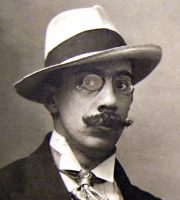
In this story (Bulgàkov, 1993), a famished dog wounded while searching for food is picked up and taken home by a man, who turns out to be a doctor. In his everyday work the man performs operations to rejuvenate and return sexual energy to men and women. One day, the professor’s assistant, also a doctor, brings something in a suitcase, which the author insinuates is a corpse. They put the dog to sleep, remove its genitals and implant the ones from the suitcase. They also remove the dog’s pituitary gland and exchange it with the one brought in by the doctor. Once the animal recovers from the operation, it can speak and read and starts taking on a human appearance. The pituitary gland and genitals were from a 28-year-old man who had died four hours and four minutes before the procedure, and the doctors wanted to examine if an organism would accept the new gland and to observe whether it played any role in rejuvenation.
What they obtained was a strange foul-mouthed and grim-faced man who would not stop swearing and who wanted to join the Communist Party – a twist that was not appreciated by the censorship system. It could represent a metaphor of the new man heralded by communism. To make it even worse for censorship, in the text, the doctor expresses his opinion on the need to avoid acting violently and enforcing violence, but rather, to try to convince and persuade.
Fictional solutions to the lack of organs
From the mid-1960s, with the advance in techniques and the advent of first methods to avoid tissue rejection – which had been the main problem – organ transplantation was consolidated (Barker & Markmann, 2013). This would save thousands of lives but also had a disturbing consequence: finding organ donors started to become more difficult.
In 1972, when the effects of this demand for donors started to be felt, the North-American author Robert Silverberg (1935) published the tale Caught in the organ draft (Silverberg, 1986). The story describes a society in which, due to a lack of organs, individuals who are considered useful are forced to donate their organs, as long as they have two – as is the case with kidneys – and removing them does not imply their death. In the book, there are different levels of eligibility for receiving an organ. The narrator’s father is 45-year old and is on level 5-G, very close to the top of the list. If he needed a heart or a kidney, he would probably get one immediately. The narrator wants to oppose his being a donor when they call upon him, but he finally agrees to donate a kidney, which allows him to move higher up the receiver list. The story also talks about the problem of tissue rejection.
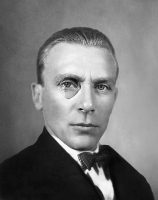
Regarding the lack of donors and compulsory donations, there is a more recent dystopia: Never let me go (2005), by the Japan-born British author and Nobel Prize for Literature 2017 Kazuo Ishiguro (1954). The work presents a group of young students at the enigmatic Hailsham boarding school, an elite school with unique characters and conditions. The students are boys and girls who are never visited by any relatives. As the book later reveals, their only purpose is to become organ donors. The two last chapters provide several keys to the story, where one of the characters explains to the teenagers that the society wants them «behind the curtain», so they would not have to decide whether it was fair for some people to be predestined for this purpose. Considering the benefits of the system, society closed its eyes to avoid learning about the origin of the organs (Ishiguro, 2006).
Organ transplants in Catalan literature
In Catalan fictional literature, we can highlight Pel camí de l’arbre de la vida (“On the road of the tree of life”), published in 1985 by the author and pharmacist Rosa Fabregat (1933). It was the continuation of the novel Embrió humà ultracongelat núm. F-77 (“Deep-frozen human embryo no. F-77”, 1984). Both texts were published together in a single volume: La dama de glaç (“The lady of ice”, 1997). In the work, the main character’s wife has died and he goes to the organ bank to try to discover who received her donations – her heart, liver, and corneas. But he also wonders what happens if, once dead, the body is broken into pieces and some of those pieces are transplanted into another person… What would happen? Can the self be broken into pieces? (Fabregat, 1997, pp. 222–223).
Leaving fiction aside and turning to autobiographies, we must also mention Jeroni Alsina (1937) and his work Shadows of fire (Alsina, 2014), which has been translated into Spanish and English. Alsina is a retired doctor who lived and worked in France in the sixties. There, he had the opportunity to witness the first kidney transplants. On his return to Catalonia, he started the Kidney Transplantation Unit at the Hospital Clínic in Barcelona, together with Josep Maria Gil Vernet and Antoni Caralps. In one of the first chapters, he narrates how he prepared for and performed the first kidney transplant in Catalonia.
Finally, the tale El cor (“The heart”), by Jordi de Manuel (De Manuel, 2001), tells the story of a heart transplant receiver’s desire to know about the donor. The final twist refers to one of the most promising fields related to organ transplants.
Recent contributions: between the heart and the brain
The most recent fiction in this area that we know of was written by the French author Maylis de Kerangal (1967). The title is Mend the living (originally published in 2014). The novel tells the story of the death of a young man in a car accident in north-western France. The author skilfully and delicately offers, with careful and often poetic language, not only emotions, but also scientific data. De Kerangal explains that cardiac arrest is not the symbol of death anymore: It has been replaced by the suspension of brain function, as proposed by Maurice Goulon and Pierre Mollaret in the 23rd International Congress of Neurology (Mollaret & Goulon, 1959). It was a major step towards being able to source more organs, although it was not the original objective of the creation and evolution of the concept; the aim was to provide medical attention to sick people in extreme situations (Machado et al., 2007).
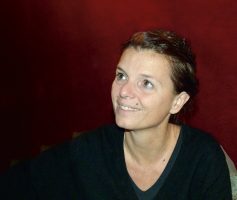
De Kerangal explains, in detail, everything that surrounds a transplant: how the young man’s parents receive the news, how they listen to the doctor who asks for the organs, their doubts, their refusal and, finally, their approval. She describes all that human life stands for when the only parts left are physical elements to be used before they decompose and are lost forever. Some descriptions prove that several of these elements transcend far beyond their physical function. «Carles yeux de Simon, ce n’était pas seulement sa rétine nerveuse, son iris de taffetas, sa pupille d’un noir pur devant le cristallin, c’était son regard» (De Kerangal, 2015, p. 117).
Thanks to the author, we come to know all human elements involved, from the receiver to the medical teams who extract and prepare the different organs, and the procedure to implant the heart. When we finish reading, we think that while the old woman has received a new heart to continue living, the young man’s heart has received a body to keep on beating.
Finally, we will comment on a novella published in the last decade, which can be related to a current and controversial scientific project. In 2002, the British author of Pakistani descent Hanif Kureishi published The body. The book tells how rich old men and women pay for their brains to be transplanted into young people’s bodies. The narrative does not contemplate tissue rejection – the main character recovers in a short time. Nor does it discuss whether the brain also ages, which would imply that the cognitive skills of the person would deteriorate with each successive transplant. Kureishi is mainly interested in showing how the decision impacts the main character.
This character is named Adam, an author aged more than sixty years, who is finding that his desires are ever further from the possibilities his aging body can give him. When his brain moves into a new younger and more powerful body, he obtains new strength, but is also faced with conflicting emotions. The author’s reflection does not forget the possibility that an increased demand for bodies could lead to the elimination of young individuals in society. He also discusses the role of the few doctors who, according to the book, can carry out the procedure: only three or four around the world, who he says are like the men who made the atomic bomb – hated, admired, and feared, because they had forever changed the nature of human life (Kureishi, 2014, p. 107).

A few years after Kureishi’s novel, the Italian doctor Sergio Canavero presented the possibility of a head transplant for the first time. It could be performed on people who suffered from degenerative diseases. While we say head transplant, it would more accurately be called a body transplant because the thoughts and knowledge would be those of the person the brain belonged to.
This is not completely new. In 1970, a team led by Robert White, from the Cleveland Medical School, transplanted a monkey head from one body to another, without attaching the spinal cord. The animal survived for eight days. Canavero points out that science has evolved a great deal and described his technique to preserve both parts during the procedure and how to reattach the spinal cord (Canavero, 2013).
The project raises many considerations. Does the personality of an individual reside only in the cerebral cortex? What psychological impact might the procedure have? How will the brain learn to manage its new and unknown body? Could it lead to purely cosmetic procedures, such as those seen in Kureishi’s novel? We are sure that there is enough material here for some talented and rigorous writer to set up a fiction and help us reflect upon these issues, because science and literature feedback into each other and, together, help to spread the debate to as much of society as possible.
Conclusions
Firstly, the aforementioned texts manifest that many of the fictional elements that might seem exaggerations by some authors are actually based on real scientific research. Other references relate to direct knowledge or to a profound investigation.
But a very interesting point is how ethical and social problems are discussed in work from different eras. The lack of organs, the identity of the donor, or insufficiently safe experiments are some of the topics covered.
This helps to prove once more that fictional literature, apart from bringing the general reader closer to the emotions of a donor’s family or a receiver’s feelings, can be a great tool to communicate scientific knowledge and to spread bioethical considerations. Once more, this reminds us that fictional literature can help bring very important scientific and social debates closer to people who would never read an essay: Thanks to fiction, they can acquire knowledge and criteria which they can use to act as informed and conscious citizens.
Notes
1. «A man who in his orgy of absurdities had reached the extreme of grafting English cockerels on to Spanish cockerels – she had seen herself! Poor creatures, with their combs cut open and on them, held in place with pieces of rag, stumps of raw, bleeding flesh – how nauseating!». Translated by Mètode. (Go back)
References
Alas, L. (1989). La Regenta. Madrid: Cátedra.
Alonso, J. R. (2013). Los milagros de San Cosme, San Damián y Pedro Cavadas. Retrieved on 3 July 2017 from https://jralonso.es/2013/02/28/los-milagros-de-san-cosme-san-damian-y-pedro-cavadas
Alsina, J. (2014). Ombres de foc. Maçanet de la Selva: Gregal.
Barker, C. F., & Markmann, J. F. (2013). Historical overview of transplantation. Cold Spring Harbor Perspectives in Medicine, 3(4), a014977. doi: 10.1101/cshperspect.a014977
Beliàiev, A. (2013). La cabeza del profesor Dowell. Barcelona: Alba.
Bulgàkov, M. (1993). Cor de gos. Barcelona: Club Editor.
Canavero, S. (2013). HEAVEN: The head anastomosis venture Project outline for the first human head transplantation with spinal linkage (GEMINI). Surgical Neurology International, 4, s335–342. doi: 10.4103/2152-7806.113444
Darwin, C. (1984). L’origen de l’home. Sobre la selecció en relació amb el sexe. Barcelona: Biblioteca Clàssics de la Ciència.
De Kerangal, M. (2015). Reparar els vius. Barcelona: Angle.
De Manuel, J. (2001). El cor. En Disseccions (pp. 11–21). Barcelona: Proa.
Fabregat, R. (1997). La dama de glaç. Lleida: Pagès.
Hunter, J. (1835). The works of John Hunter: with notes. Londres: Longman, Rees, Orme, Brown, Green and Longman.
Ishiguro, K. (2006). No em deixis mai. Barcelona: Empúries.
Krementsov, N. (2009). Off with your heads: Isolated organs in early Soviet science and fiction. Studies in History and Philosophy of Biological and Biomedical Sciences, 40(2), 87–100. doi: 10.1016/j.shpsc.2009.03.001
Kureishi, H. (2004). El cuerpo. Barcelona: Anagrama.
Machado, C., Korein, J., Ferrer, Y., Portela, L., García, M. C., & Manero, J. M. (2007): The concept of brain death did not evolve to benefit organ transplants. Journal of Medical Ethics, 33(4), 197–200. doi: 10.1136/jme.2006.016931
Mollaret, P., & Goulon, M. (1959). Le coma dépassé (mémoire préliminaire). Revue de Néurologie, 101, 3–15.
Pratt, D. J. (2001). Signs of science. Literature, science, and Spanish modernity since 1868. West Lafayette: Purdue University Press.
Silverberg, R. (1986). Trasplante obligatorio. In I. Asimov, C. G. Waugh, & M. H. Greenberg (Eds.), Trasplante obligatorio. La biología en la ciencia ficción (pp. 120–133). Barcelona: Martínez Roca.
Voragine, S. (2016). La leyenda dorada. Madrid: Alianza.



